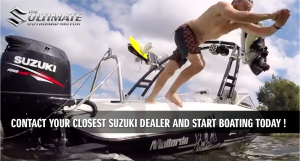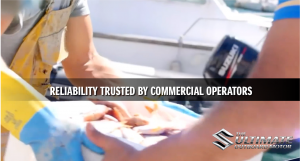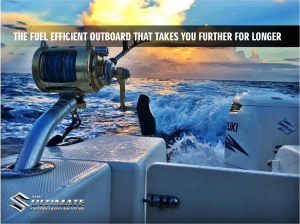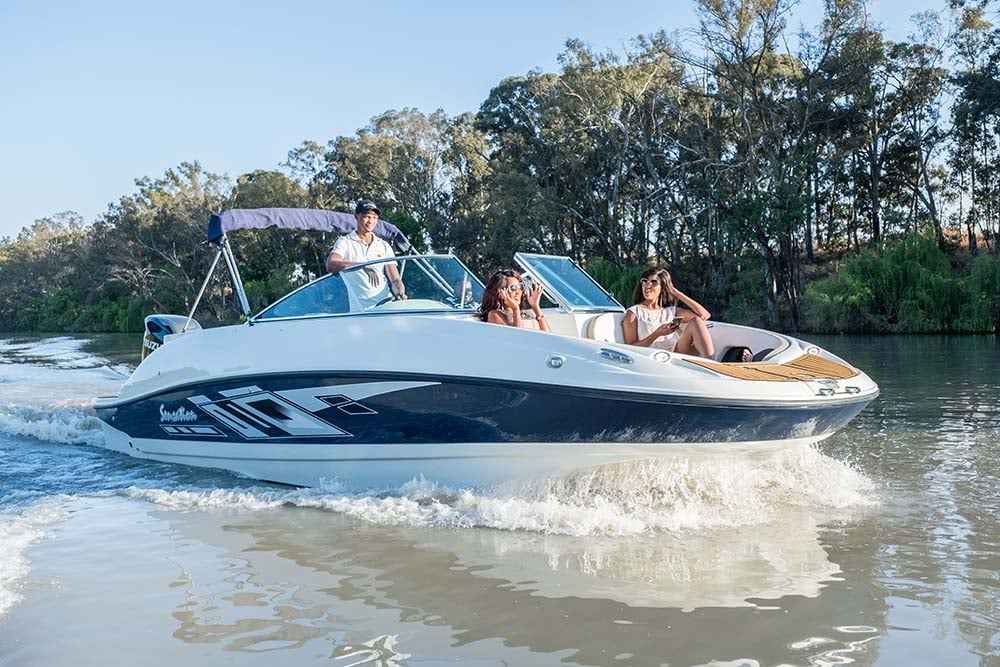
Only if the engine is smaller or equal to 15hp, you do not need a skipper’s license.
For all the other cases, before you get on your local waterways or onto the high seas, boating requires the boat and the skipper to have a license.
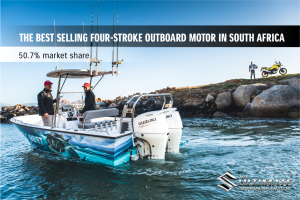
South African ski boat regulations
The South African Maritime Safety Authority (SAMSA) lists general requirements for sport and recreational boats operating on inland waters, such as rivers and dams, as well as for recreational boats less than 24 meters in length operating at sea. Do take note of these safety rules:
- Owners are required to possess a buoyancy certificate as per Marine Notice No. 8 of 2012
- The ski boat must have an annual certificate of fitness issued through a SAMSA–accredited institution
- The water craft must be marked with an approved number, administered through a water sporting body
- The vessel must be operated by a certified skipper with a minimum of an R-license for sheltered inland waters, or a Category C for coastal waters less than 15 nautical miles from the shoreline
- The ski boat must carry a tow line, anchor, as well as appropriate and required safety equipment according to the vessel’s category and type.
The boat will need to be surveyed making sure that it is properly equipped for use at sea. This is known as your survey or Certificate of Fitness (CoF) which will need to be done annually. This is like a “road-worthy” of the boat. There are certain pieces of safety equipment that is needed on your boat, before you can go to sea. Your survey will check to see that these items are in working order. Your Authorized dealer can arrange this survey to be done for you.
That takes care of the boat, now YOU need to be legal. You are required by law to have a skipper’s ticket, which is pretty much a ‘driver’s license’ to operate a boat. This is known as your Certificate of Competence (CoC). It’s usually a course held on a weekend, with you writing an exam the same day or the next weekend, followed by a practical exam. It is vital information before going boating as it teaches you the basics of boating, ‘rules of the road’ at sea, navigation, and just general boating knowledge, which will allow you to be SAFE on the water.
To operate a vessel, smaller or equal to 9 meters with an engine larger than 15hp – jet skis included, on dams, rivers, sea and in harbors in South Africa, a skipper license is required. The penalties for operating without a license are high and inspectors are clamping down on those operating without a license.
The following license categories are available:
Category R: This covers all inland waters, estuaries, lagoons & ports
Category E: Vessels only going 1Nm offshore
Category C: Vessels going up to 15Nm offshore
Category B: Vessels going up to 40Nm offshore
Skipper Coastal (Pleasure)
Skipper Coastal (Commercial)
Skipper Offshore (Pleasure)
Skipper Offshore (Commercial)
It is possible to skip categories – i.e. skip E and doing C by attending a sea academy where the instructor will take the student through the different levels.
Categories ‘R’ and ‘E’ are the entry levels for skippers to start their boating experience. One can start in either, the difference being the boating hours. The syllabus for R and E is the same, but the sea-time requirements are different. Hence a person can upgrade his Skipper Inland Waters (unrestricted) to a Day Skipper Category E by producing practical sea-time alone.
R-LICENSE – Dams and Rivers
The license which allows the holder to operate on dams, rivers, lakes, lagoons and harbors in South Africa.
- Copy of ID document (must be 16 years or older)
- Four passport/id photos
- Medical certificate
- Log of a minimum of 25 hours on dams or rivers. To be signed by the applicant/student.
- Pass the exam.
E-LICENSE – 1 Nautical mile from the coast and max. 15 nautical miles from a safe port of entry
- Copy of ID document (must be 16 years or older)
- Four passport/id photos
- Medical certificate
- Log of a minimum of 50 hours on the sea. To be signed off by a licensed sea skipper.
- Certified copy of the sea Skipper’s license.
- Certified copy of the sea Skipper’s ID
- A sworn statement by the sea Skipper that the hours reflected are correct and true.
- Pass the exam.
You can study online for category R and E and only write the SAMSA exam with one of our affiliated examiners when you are ready.
C-LICENSE – 15 Nautical mile from coast & max. 15 nautical miles from an approved launch site
- Copy of ID document (must be 16 years or older)
- Two passport/id photos
- Medical certificate
- Log of a minimum of 25 hours on a minimum category D vessel at sea. To be signed off by a licensed sea skipper with a skipper license C or higher.
- Certified copy of the sea Skipper’s license.
- Certified copy of the sea Skipper’s ID
- A sworn statement by the sea Skipper that the hours reflected are correct and true.
- Pass the exam on 4 more advanced subjects and practical on navigation.
B-LICENSE – 40 Nautical mile from the coast
The B category is an upgrade from C and needs a minimum of 25 hours experimental training signed off by a licensed skipper.
Surf Launching Endorsement
A sea skipper license does not give the holder the right to launch from a beach and need an endorsement on the license to do so. There is two ways to achieve this:
- Attend a formal course at the coast where the SAMSA approved examiner will then test the applicant over a minimum of 4 days – 3 launches per day.
- Do the training under the supervision of a licensed sea skipper who has a surf launch endorsement. Training must be conducted under different sea and weather conditions with at least 3 launches per day. Once the sea skipper is confident that student can launch in a safe and responsible manner, he/she has to do a signed affidavit, under oath, specified the launches completed and that the student is ready to be tested. The student then arrange with a SAMSA approved examiner to test him/her over two days and, if successful, will receive the endorsement.

